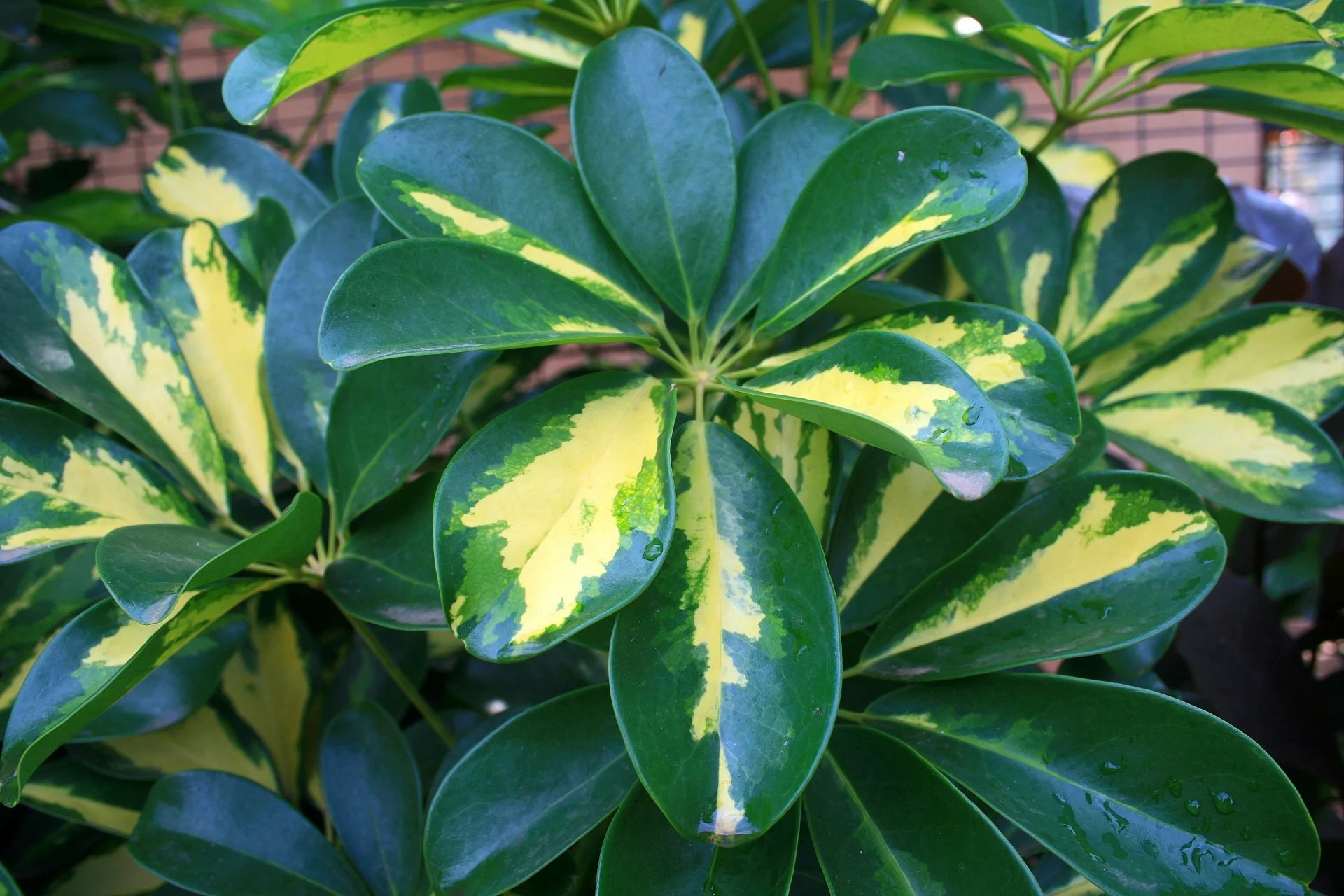Schefflera Care Guide
Schefflera plants are known for their glossy, umbrella-shaped leaves and easy-going nature, making them a favorite for homes and offices alike. With their lush, tropical appearance and tolerance for a range of indoor conditions, they bring vibrant greenery to any space. While generally low-maintenance, Schefflera plants still need the right care to stay healthy and attractive. This guide walks you through everything you need to know to help your Schefflera thrive.
1. Placement
Prefers bright, indirect light—too much direct sunlight can scorch the leaves.
Can tolerate moderate light, but growth may slow.
Avoid placing in low-light corners or near cold drafts.
Rotate the plant occasionally for even growth.
2. Watering
Water when the top 1–2 inches of soil feel dry.
Water thoroughly until it drains out of the pot’s bottom.
Reduce watering in cooler months.
Avoid overwatering, which can lead to yellow leaves and root rot.
3. Soil & Potting
Use a well-draining all-purpose potting mix.
Adding perlite or coarse sand improves drainage.
Make sure the pot has drainage holes.
Avoid overly compact or soggy soil.
4. Pruning & Maintenance
Prune to control size and encourage bushier growth.
Remove yellow or dead leaves to keep the plant tidy.
Wipe dust from leaves using a soft, damp cloth.
Pinch growing tips to maintain a compact shape.
5. Fertilizing
Feed monthly during spring and summer using a balanced, water-soluble fertilizer.
Do not fertilize during the dormant fall and winter months.
Avoid overfeeding, which can cause salt buildup and leaf burn.
6. Propagation
Stem Cuttings: Cut a healthy stem with several leaves and root it in water or moist soil.
Use rooting hormone to increase success if desired.
Keep in a warm, humid spot until roots form.
7. Troubleshooting
Yellow Leaves: Usually from overwatering or poor drainage.
Drooping Leaves: May indicate under-watering or shock from a recent move.
Brown Leaf Tips: Often due to dry indoor air or salt buildup from fertilizer.
Leggy Growth: Suggests the plant needs more light.
8. Seasonal Care
Spring/Summer: Active growing season—water more frequently and fertilize monthly.
Fall/Winter: Reduce watering and stop feeding. Keep away from cold windows or drafts.
9. Repotting
Repot every 1–2 years or when roots outgrow the pot.
Choose a container just slightly larger than the current one.
Gently remove the plant, shake off old soil, and trim any damaged roots.
Use fresh potting mix and water lightly after repotting.

